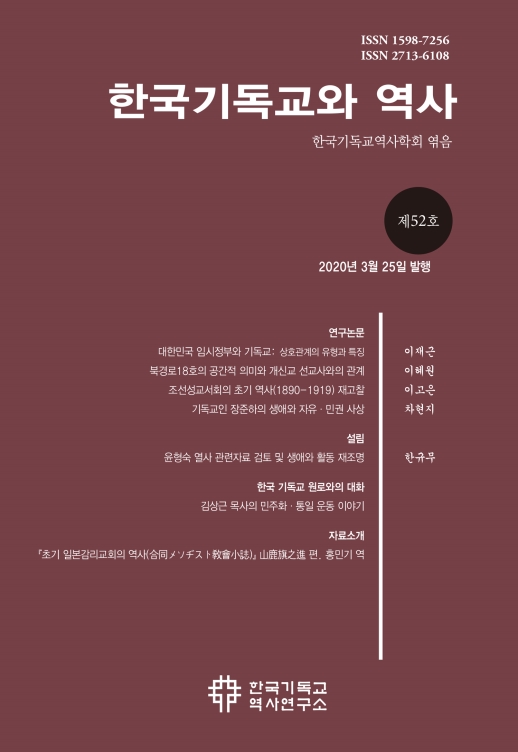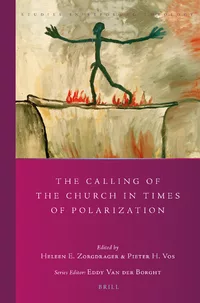한말부터 일제강점기까지 한국에서 발간된 영문 잡지 속에는 한국 종교에 대한 매우 다양하고, 때로는 깊이 있는 관찰과 해석이 발견된다. 한국을 경험한 서구인들 가운데 한국에 관한 글을 남긴 사람들은 한국과 한국적인 것들에 대해 진지한 관심을 가진 사람들이었다. 특히 개신교 선교사들은 한국과 관련된 글을 다른 어느 서구인 집단보다 많이 남겼는데, 종교에 관해서는 더욱 그러했다. 그들은 선교 현장에서 한국의 종교를 만났으며, 그것을 이해하기 위해 노력했다. 선교사들 가운데 진보적인 사람들은 기독교 이외의 종교를 기독교를 준비하는 과정으로 이해한 소위 성취론적인 입장을 가지고 있었다. 오늘의 종교다원주의적 입장과 비교할 때 성취론은 여전히 서구-기독교 중심적이고 사회진화론적인 가치관을 반영했다. 그러나 그것은 당대의 서구인들로 하여금 비기독교 종교전통을 긍정적으로 바라보고 연구할 수 있는 기초를 제공하기도 했다.서구인들은 한국의 종교 가운데 샤머니즘, 특히 정령신앙이 가장 오래된 종교전통이며 한국인들의 종교적 심성의 가장 깊은 곳에 자리하고 있다고 보았다. 대부분의 서구인들은 정령신앙을 미신, 혹은 악령신앙으로 생각했으며, 샤머니즘, 풍수지리, 장승 등의 민간신앙도 비과학적이고 전근대적인 신앙행위라고 여겼다. 서구인들의 눈에 비친 불교는 오랜 동안의 탄압으로 인해 활력을 잃은 종교였다. 사찰들은 퇴락했으며 승려들은 교육받지 못하여 무지하고, 종교적 열심도 없었다. 그러나 그들은 불교와 상관이 없는 각종 민간신앙의 요소들이 불교와 결합되어 있는 현상 속에서 불교가 가지고 있는 놀라운 융합력을 보았다. 불교 및 불교와 결합된 각종 민간신앙은 민중과 여성 속에서 여전히 끈질긴 생명력을 유지하고 있었다. 한편, 근본적으로 유신론적 종교관을 가지고 있던 서구인들은 유교를 종교라고 생각하지 않았으며 당대의 한국이 가지고 있는 여러 가지 문제의 원인으로 지목하여 비판했다. 제사와 관련해서는 한국의 제사가 중국보다는 비종교적이며, 효도의 연장선에 놓여있음을 발견하기도 했다. 서구인들은 동학이 기독교의 영향 아래 발생한 종교라고 보았다. 그들은 동학의 신관에 주목하여, 그것이 “순전히 유일신적”인 종교이며 사람의 행동에 영향을 주는 마음과 양심의 종교라고 호평했다.
This article examines westerners' observation and understanding of Korean religion at the turn of the twentieth century and during the Japanese colonial occupation. Westerners who wrote about Korean religion seem to have had genuine interest in it. Their writings cover a large variety of topics and phenomena of Korean religion. Although they inevitably reveal Orientalism and other western-Christian-centered, social Darwinian perspectives, they often demonstrate expert knowledge and deep understanding. Protestant missionaries were among the most sincere and productive observers of Korean religion. The fulfillment theory, which understands non-Christian religion as a preparation for Christianity, gave missionaries a frame of reference to study and understand Korean religion. Missionary writings on Korean religion in missionary journals are often biased by missionary concerns. However, many missionaries also wrote objective and excellent articles on Korean religion in general English journals. Westerners thought Shamanism, and spirit worship in particular, to be the earliest expression and heart of Korean religiosity. Some tried to understand Dangun in connection with Korea's antient Shamanist tradition. Most western writers believed that spirit worship, geomancy, and other folk practices were unscientific and superstitious. Buddhism at that time looked decayed with dilapidated monasteries and mostly uneducated and marginalized monks. Nevertheless, many western observers thought of Buddhism as a great religion. They found that Korean Buddhism adopted many Shamanist elements and had faithful followers especially among women and the masses. Some claimed that Mahayana Buddhism was a result of early Buddhist-Christian encounter. Confucianism was a subject of criticism and contempt. To their eyes, Confucianism was more a philosophy or ethical system that was concerned with this world only. Ancestor worship looked like practically the only religious element of it. Westerners' theistic understanding of religion was well revealed by their positive view of Donghak which they thought reflected Christian influence.







